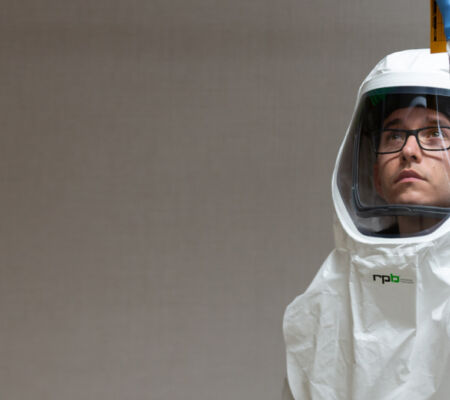
The outbreak of COVID-19 has had a devastating impact globally and this is affecting the lives of billions of people from all walks of life.
Back to Articles & Resources View all COVID-19 content
When reflecting on this pandemic it becomes very overwhelming and at times, it is difficult to see anything beyond the negatives. However, there are positives and for respiratory protection, COVID-19 has been a catalyst for change.
COVID-19 has highlighted the important role respiratory protection plays in our everyday lives. Globally there has been an influx of people wearing respirators and this has forced people to desperately try and source them as their governments encourages their use. Although a lack of global supply is bad, this message and attitude shift is creating less resistance for their use and is helping to normalize wearing respirators, something that has been an issue in some occupations for years. By this becoming part of our everyday lives, we hope this attitude continues to shift and people look to now understand the respiratory hazards in their working environment.
The shortage of N95s and surgical masks has also impacted heavily on businesses as they have sought out alternative forms of respiratory protection. Through searching and the recommendations from the Centers for Disease Control and Preventions (CDC), powered air purifying respirators (PAPRs) have started to become a popular form of respiratory protection that is now being utilized in more and more settings. Because of businesses decisions to move towards these products, users are now receiving a greater standard of protection for their role and this is making a huge impact in places such as hospitals, aged care facilities, and testing stations.
Users now understand that wearing a respirator does not necessarily mean they are actually being protected from their environment. With COVID-19 spreading by direct and indirect aerosol and droplet transmission which can enter via the respiratory system or through moisture on the eyes, this has demonstrated that in many settings where it was thought to be an appropriate form of protection, wearing an N95 or surgical mask may no longer be sufficient. The negative pressure element and lack of a tight seal is making these a liability in some instances and this is continuing to push users towards loose-fitting, positive pressure respirators because of their all-encompassing protection.
In many countries where nurses and doctors have been working long and dangerous shifts in response to the pandemic, they have had to improvise their PPE due to the shortages. Even when they have been supplied proper PPE, this has not always been fit for purpose and has left medical personnel bruised, with cuts and friction burns. Through COVID-19 we have seen firsthand the relationship between PPE and physical and psychological wellbeing. Everyday healthcare personnel are putting themselves on the line to do their job because they want to protect the people and save lives, but the PPE they are supplied with is restricting their ability to work safely. From this experience, governments and those in the healthcare industry now realize a greater level of respiratory protection and comfort in these products is required for staff to sustain lasting efforts and for future pandemic responses.
This influx in demand has encouraged respiratory protection manufacturers to develop products that are desperately needed now. With such demand, this creates a large sample size of customers that are using respirators for varying reasons and through this, manufacturers are able to gather large scale feedback. With this information products can be created that are going to make a real difference when used in their application and this helps respiratory protection to be industry/application specific.
Lastly, with borders closed, non-essential businesses shutting down and strained international shipping services, sourcing products and materials from outside the US has proved to be very difficult. Supporting US made is creating more jobs that are desperately needed when unemployment is at an all-time high and reduces lead times on vital PPE supplies. As COVID-19 continues to be an increasing threat, it is evident production power is needed here in the US now more than ever to save lives.
